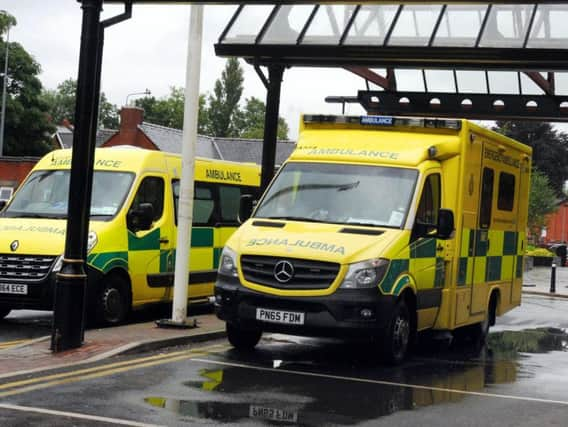Wigan's A&E waiting times are the second worst in the country


Data published by NHS England reveals the performance of Wrightington, Wigan and Leigh NHS Foundation Trust (WWL) plummeted last month.
Other News: Large turnout expected today at funeral for Billy LivesleyIts A&E saw just 63.7 per cent of patients within the target time - dropping from 77.2 per cent in December and far below the Department of Health standard of 95 per cent.
Advertisement
Hide AdAdvertisement
Hide AdNationally, 84.4 per cent of patients were treated or admitted within four hours, the worst performance since the four-hour target was introduced in 2004.
Hospital chiefs in Wigan had warned of high demand and long waits in casualty at the beginning of last month.
This was exacerbated by the closures of two wards due to outbreaks of flu and norovirus.
The new figures place the trust as the second worst in the country, with only United Lincolnshire Hospitals NHS Trust ranked below with a performance of 62.7 per cent.
Advertisement
Hide AdAdvertisement
Hide AdWigan Infirmary’s A&E saw 60.2 per cent of patients in time - ranking it as the ninth worst in England and dropping from 75.3 per cent in December.
Leigh Walk-In Centre met the target for 98 per cent of people in January.
The trust had 2,818 emergency admissions, dropping from 2,866 in December.
A total of 184 patients had to wait more than four hours to be admitted, after the decision to admit was made.
Advertisement
Hide AdAdvertisement
Hide AdIn October, trust bosses detailed the preparations being made for the busy winter months, in a bid to prevent the long waiting times faced by patients last year.
They included streaming patients who do not need emergency care to Christopher Home’s primary care centre or the minor injuries unit. However, plans to upgrade Christopher Home to an urgent treatment centre have been delayed.
There are now 10 step-up beds, a clinical liaison officer helps manage A&E patient flow, changes were made to staffing rotas and a team is working to help discharge patients ready to go home, reducing bed-blocking.
But the trust’s performance last month was below that of January 2018, when it saw 73.9 per cent of patients within the target time.
Advertisement
Hide AdAdvertisement
Hide AdAcross England, nearly 330,000 A&E patients waited longer than they should.
Nuffield Trust chief economist Prof John Appleby said: “The proportion of patients spending more than four hours in A&E has risen to 15.6 per cent in January - the highest ever in this set of data.
“It looks like the gap between the service’s capacity and the care we need from it is widening.
“Only two major emergency departments in England met the four-hour target and attendances have risen by an astonishing 85,000 compared with January last year, increasing through the winter when they would usually fall.”
Advertisement
Hide AdAdvertisement
Hide AdDr Taj Hassan , president of the Royal College of Emergency Medicine, said: “These are the worst figures on record, showing that despite the positivity around the NHS Long Term Plan, the suffering affecting our patients in emergency departments in England has not gone away at all.
“Sadly the situation afflicting our emergency departments has become seemingly normalised with a ‘chronic crisis mode’ that does not allow staff to deliver the quality of care they would wish and patients should rightly expect. The evidence on resultant crowding in departments is clear - it adds to the risk of harm to patients leading to excess deaths and disability.
“These figures make clear the true scale of this crisis facing our systems. Despite a relatively mild winter, with lower rates of norovirus, nearly one in four people are waiting over four hours and nearly a third of all attendances require admission; the need for more beds could not be clearer.”
NHS England is currently reviewing its clinical targets, including the requirement that 95 per cent of patients attending A&E are treated, admitted or discharged within four hours.
Advertisement
Hide AdAdvertisement
Hide AdIts chief executive Simon Stevens said a new target will see a shorter waiting time target for treating people with serious conditions such as stroke, heart attack and sepsis. People with less critical needs will need to wait longer.